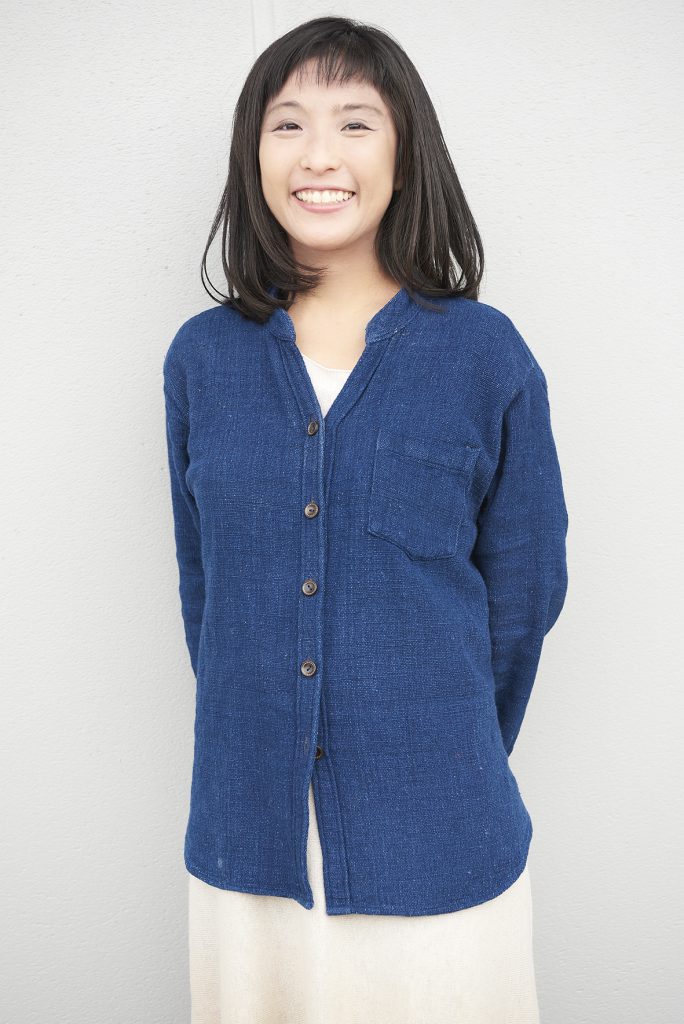Dan Buettner’s bestseller, “Blue Zones,” which was also adapted into a hit series on Netflix, identifies five regions with a high number of centenarians. One of these zones is Yambaru, in the north of Okinawa Island. A rich cultural and natural heritage remain in this region, holding the secret to the longevity of the communities living there.
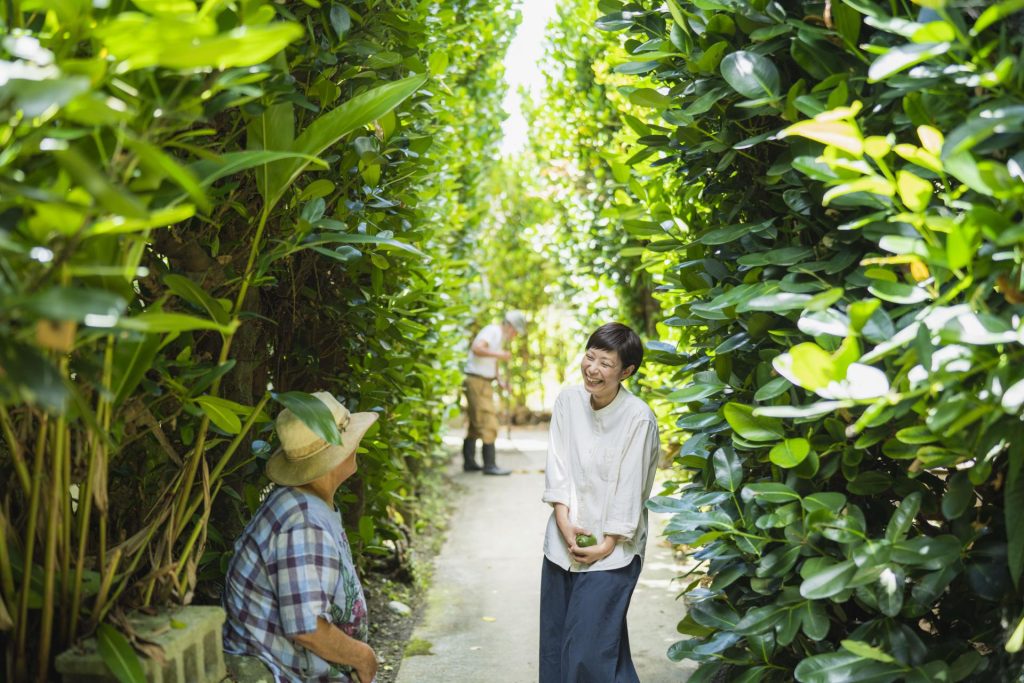
Sardinia, Italy, the Nicoya Peninsula in Costa Rica, Loma Linda in California, Ikaria in Greece and Yambaru in Okinawa are “Blue Zones’ where Dan Buettner conducted cross-regional investigations on the lifestyle of the locals there to find out their secrets.
His research paints a picture of how the people in these areas move naturally, eat wisely, have the right outlook and are connected to their tribe—their people, society and the natural environment around them. He suggests the wisdom nurtured in these places can help others achieve health and longevity.
Okinawa as a whole no longer holds the title for the world’s longest average life expectancy. Buettner speculates this is in part due to American chain restaurants and fast food that has altered the eating habits of urban dwellers and the younger generation. However, a traditional lifestyle still remains in Yambaru one that provides a balance of activity, due in part to nutrition and community in Japan’s only “Blue Zone.”
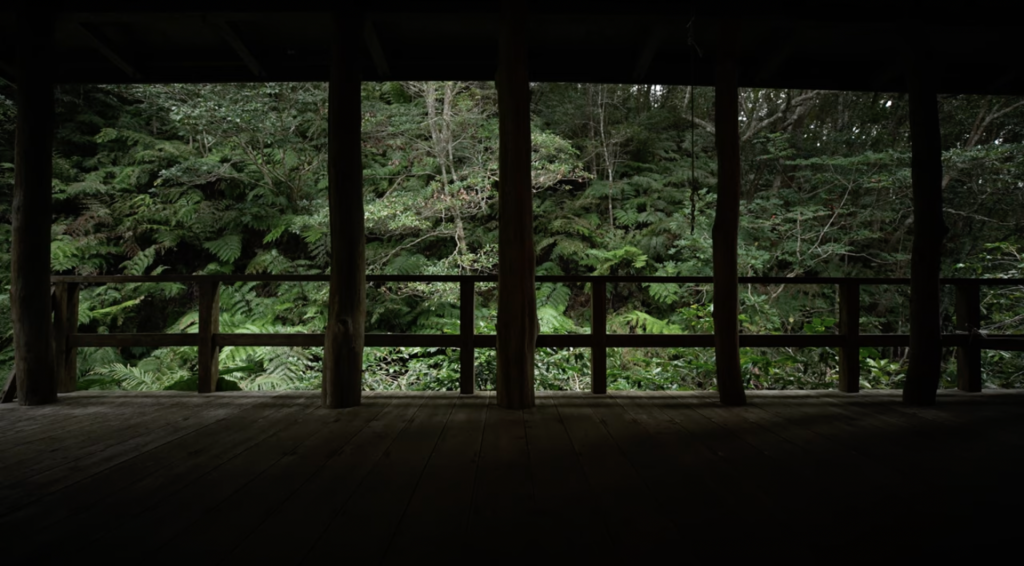
Living Between the Forest and the Sea
Subtropical regions at the same latitude of Yambaru are typically desert areas like Libya, or arid regions such as in India, making forested areas rare. Yambaru, however, is 80% forest. Blessed by the Kuroshio Current and warm rain, the evergreen broadleaf forest nurtures many unique species. Though it occupies only 0.1% of Japan’s total area, it is home to 50% of Japan’s bird species and 25% of its frog species. Endemic species such as the Yambaru kuina (Okinawa rail) and the Okinawa woodpecker thrive here, supported by a diverse range of plants.
This rich ecosystem, with its intricate web of unique creatures, was recognized as a UNESCO World Natural Heritage site in 2021. This recognition would not have been possible without the culture and history of the people who have lived in harmony with nature here. The Yambaru Region consists of Kunigami, Ogimi and Higashi villages, which are divided into 43 communities along the coast. In these small strips of land between the forest and the sea, people have developed a lifestyle that coexists with both.
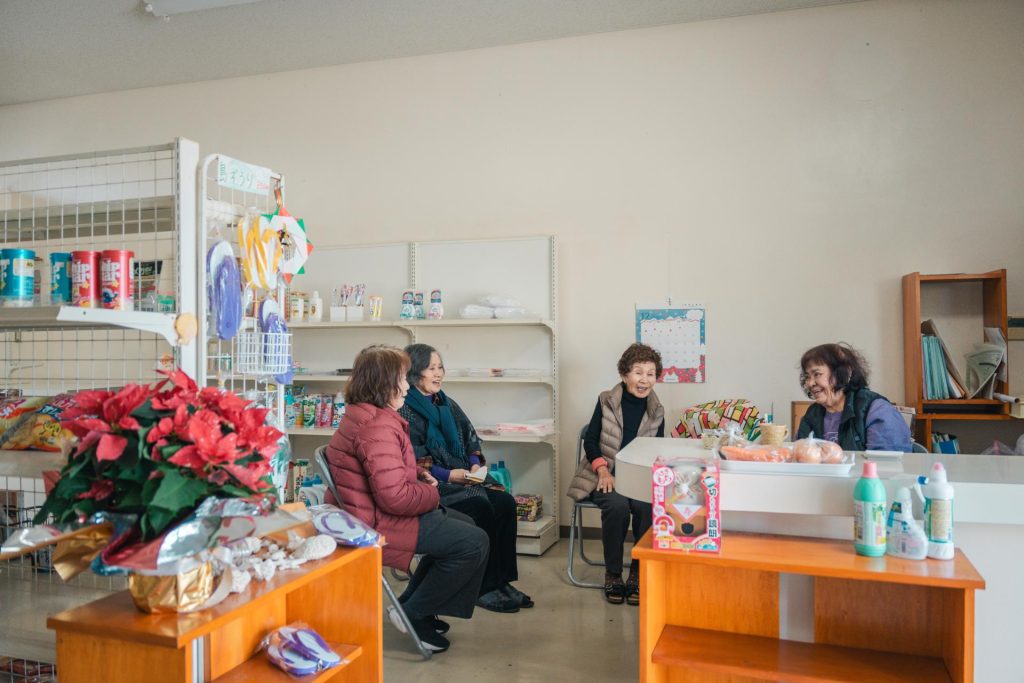
“Our life here is open to the outdoors and to each other,” says Itsumi Nakamoto, who runs a local tour company and private villas called Nammei Shinshitsu in the heart of the Kijoka community of Ogimi and the Jyashiki community of Kunigami. Both communities are extremely small; even some Okinawans are unaware of their existence, making them hidden gems. A native to Kunigami Village, Nakamoto aims to offer travelers an opportunity to explore authentic village living while ultimately passing on the beauty of her home to the next generation.
Many villagers live alone or with just one other family member, but see others at least once or even twice a day: during the day while running errands and in the evenings when they pass the time cooling off together.
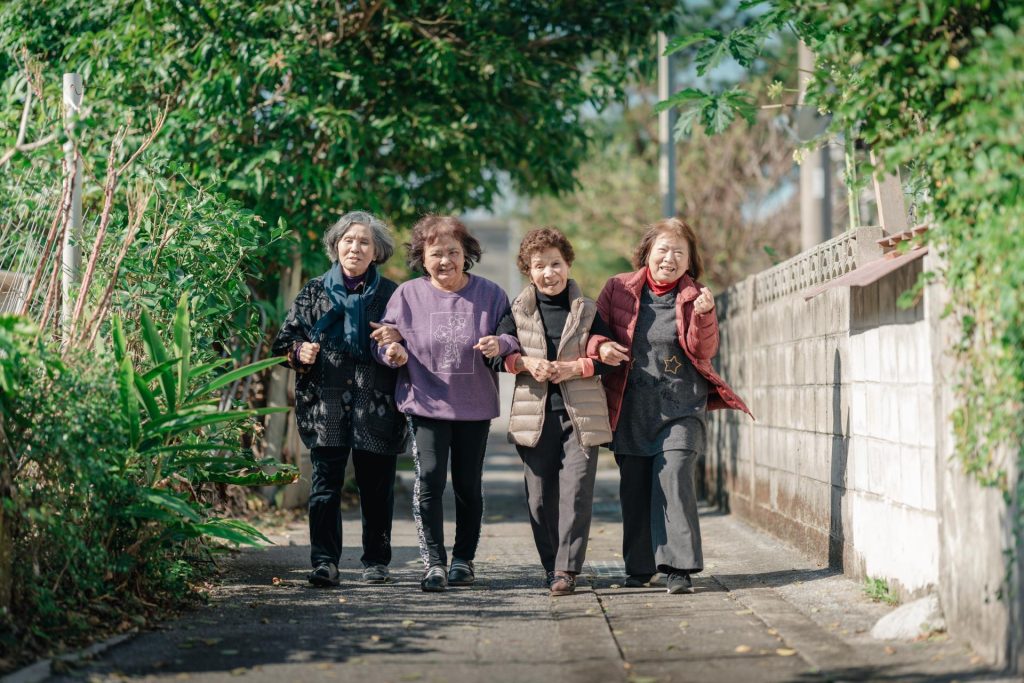
Elderly men and women enjoy tea or sake outside. As long as travelers maintain respect (i.e., go with a local guide and avoid rudely taking photos), the residents will casually invite visitors into the conversations. In Okinawa, there is a saying, “Ichariba chode,” meaning, “From the moment we meet, we are like brothers and sisters.”
Those who see each other daily certainly share an even deeper connection. A key aspect of Okinawan culture is the concept of “moai,” which refers to lifelong groups of friends who support each other. Moai groups offer financial, emotional and social support, contributing significantly to the community’s overall well-being and longevity. The mutual help within moai foster strong social connections and a sense of belonging, crucial elements for a long and healthy life.
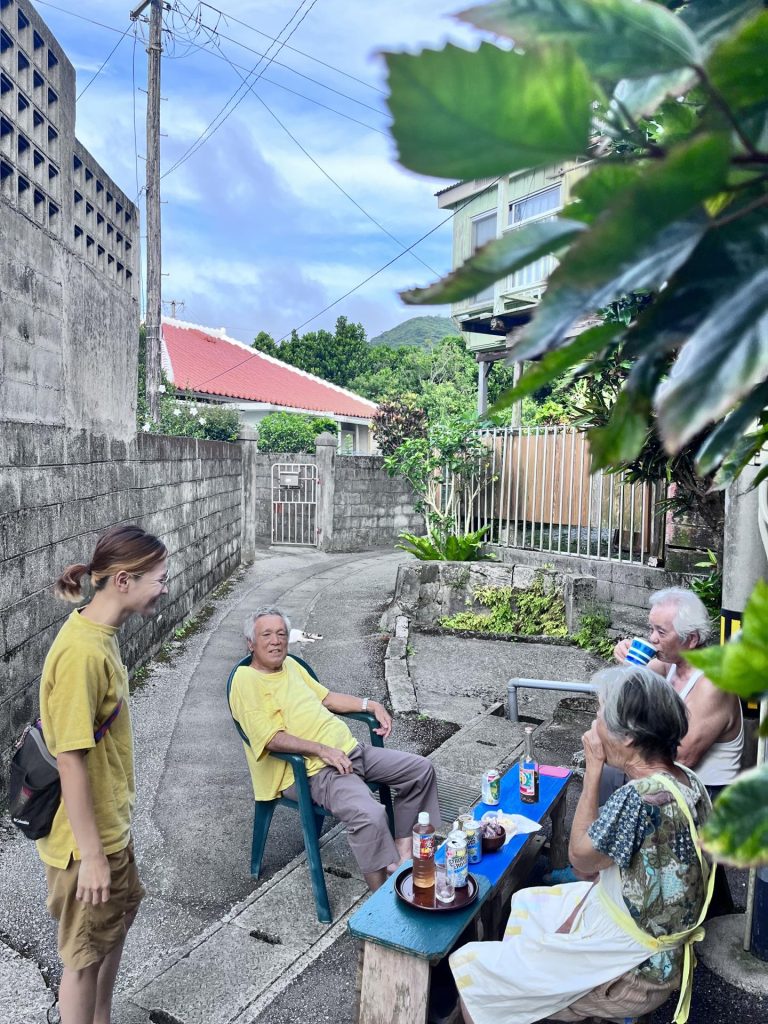
Homegrown Sustainability
One of the keys to longevity is eating wisely, and the people of these communities do just that. In Okinawa, ingredients and meals that boost health are called nuchigusui, or “life medicine.” According to Emiko Kinjo who runs Emi-no-Mise, a local restaurant in Kunigami Village, the way people in these villages eat embodies this concept.
Their ancestors sustained themselves from the forest, the sea and the farms they cultivated in the forest. Much of the bigger fields have returned to the forest, yet each home still has a small garden with plants for medicine and cooking.
“Even if the elderly cannot drive to the supermarket, they can still get vegetables from the garden in front of their house. Or if typhoons hinder the growth of vegetables, the grandmothers of this place still know how to cook the wild plants,” says Emiko. The dishes she serves at her restaurant are not much different from the daily diet of locals, a lesson in how to receive the blessings of the land and sea, such as wild herbs, boar, fish, seasonal vegetables and more.
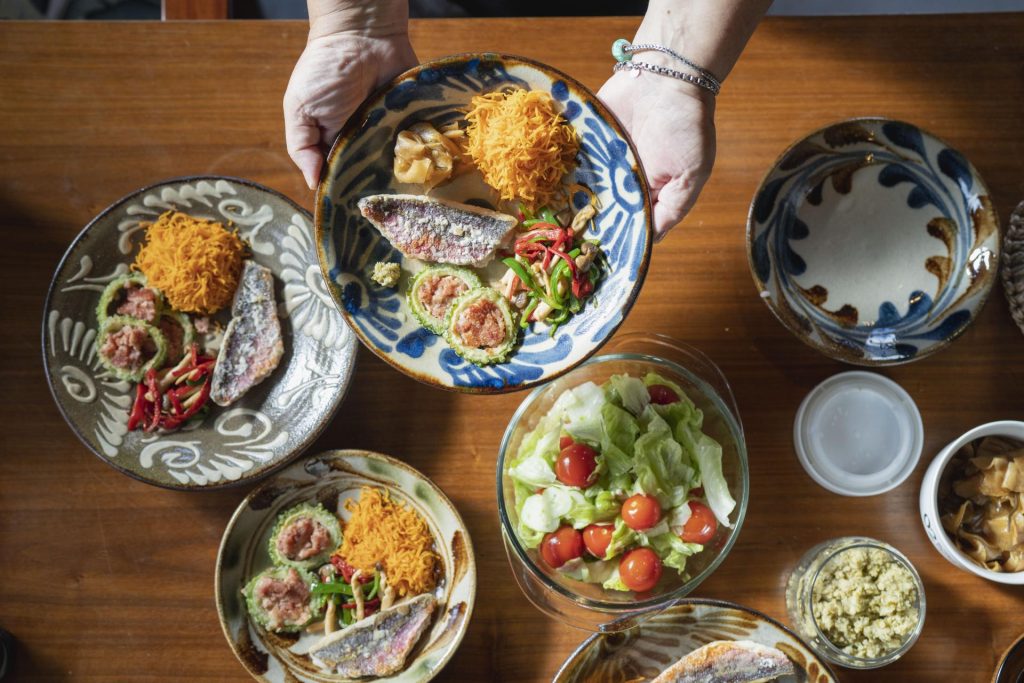
Ikigai: Sensing the Mighty
Ogimi Village is also the birthplace of “ikigai,” a word gaining international recognition, which means “purpose of life.” European journalists discovered this word while interviewing the people living in Ogimi and recognized it as another key to a fulfilling life. Buettner describes ikigai as having the right outlook. People with ikigai get up every morning with things to do, knowing it will contribute to their surroundings no matter the size of the impact. What they do is at the intersection of what they love, what they are good at and what the world needs.
Toshiiko Taira, who lived in the Kijoka community of Ogimi Village is known as a kind of ikigai role model. She dedicated her life to preserving the Kijioka bashofu textile techniques of the village. This traditional textile is the only textile present in modern Japan where the entire process from growing the materials to weaving the fabric is completed within one village. Moreover, the process uses no gas, just manpower and firewood.
From the heavy labor of growing banana plants to the delicate work of spinning threads, jobs are attributed to villagers including elders. Taira, herself continued spinning Bashofu threads until a few months before her death at the age of 104. From Nammei Shinsitsu villas in the Kijoka community, it’s a five-minute walk past Bashofu leafs to the Bashofu Kaikan, where you can see women continuing to weave—the beautifully woven products filled with the ikigai of the villagers.
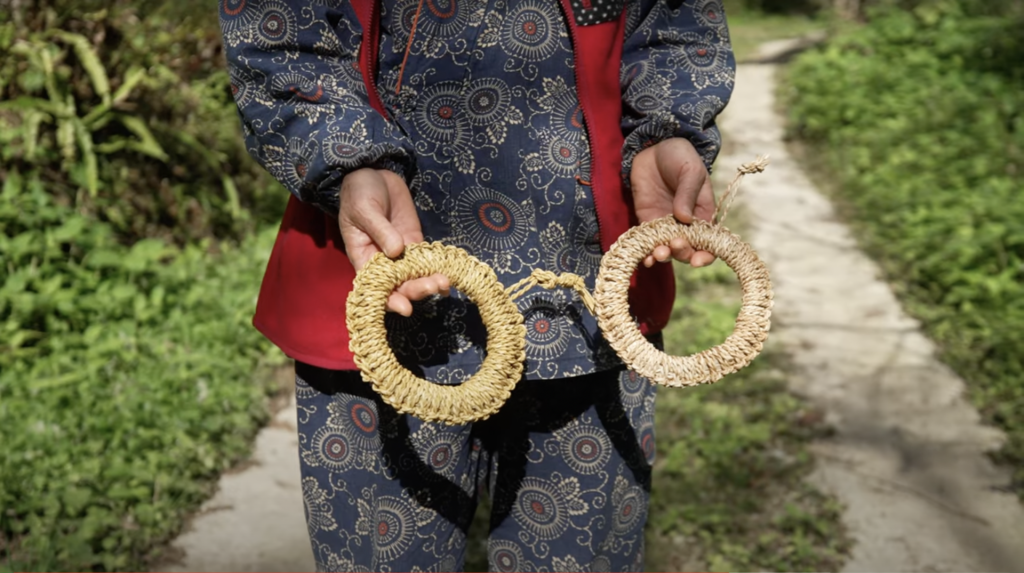
Plants of Yambaru are also used to make daily necessities other than textiles. A forest road in Kunigami Village leads to a secluded atelier not visible on Google Maps and accessible only to those who already know it. Local women gather there to turn the leaves of shell ginger and other wild plants into ropes, baskets, trivets, even shoes.
Crafting with wild plants is not only a communal practice but also a spiritual one. Deities are believed to descend upon certain plants like kuba (fountain palm), and men would wear kuba ropes made here into the mountains to greet the spirits on ceremonial occasions.
Recent Harvard research has uncovered a correlation between spirituality and longevity. Although such studies are still in progress, spending time with these women and learning rope making, amidst the invisible beings of the forest, you may sense their wisdom being imparted into you.
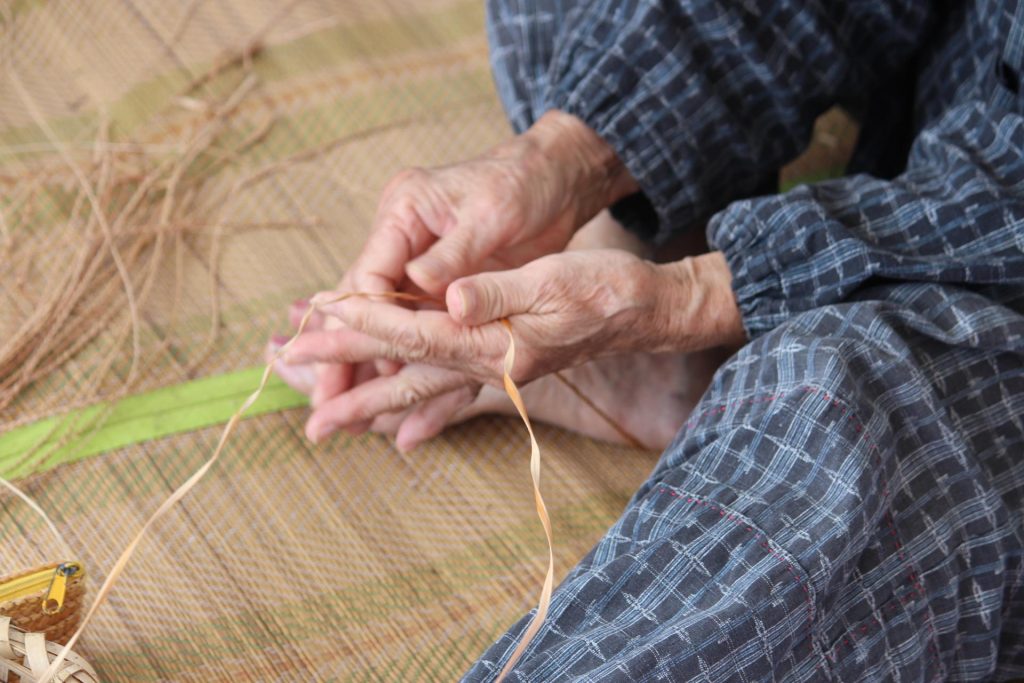
Blue Zone Visitors
“This is not untouched nature,” adds Itsumi. “Rather, we live where people have long been exploring how to live together with nature.”
Staying at a Nammei Shinshitsu villa offers a unique opportunity to authentically experience a lifestyle that fosters longevity. Visitors spending time in these villages, where nature is seamlessly connected to human activities, get a sense of peering back into the past while gazing into a brighter future.
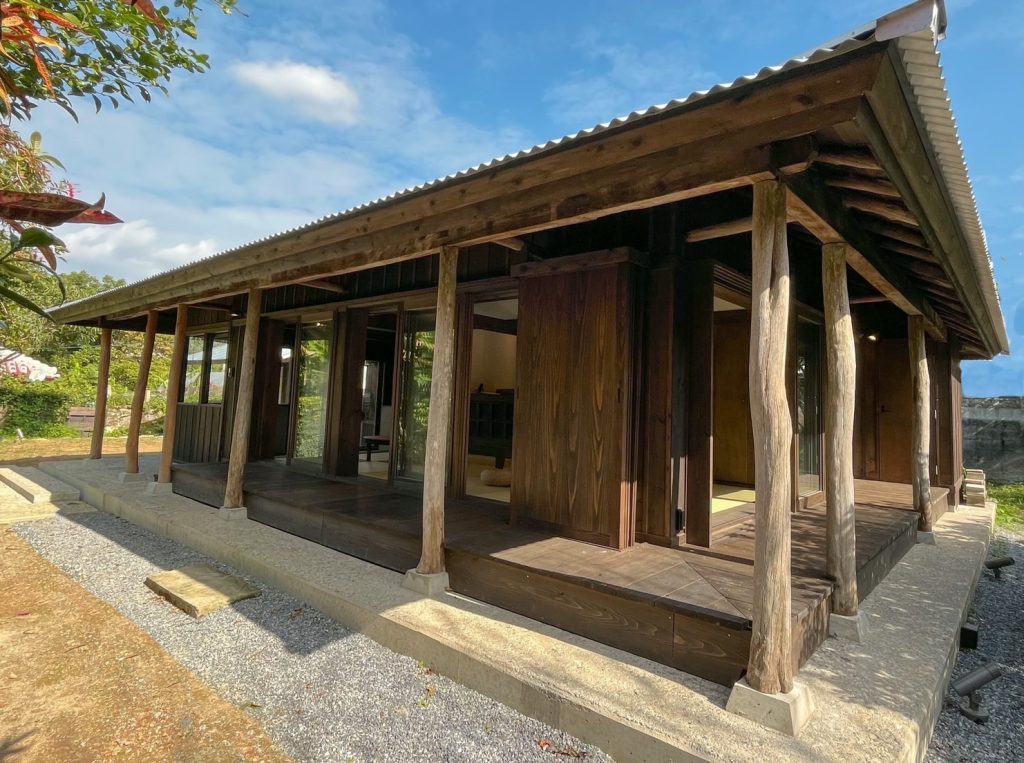
These quiet, far-off-the-beaten-path communities welcome a limited number of guests at a time. Visitors can connect with the locals, immerse themselves in their daily life, learn from their way of being and take these lessons home.
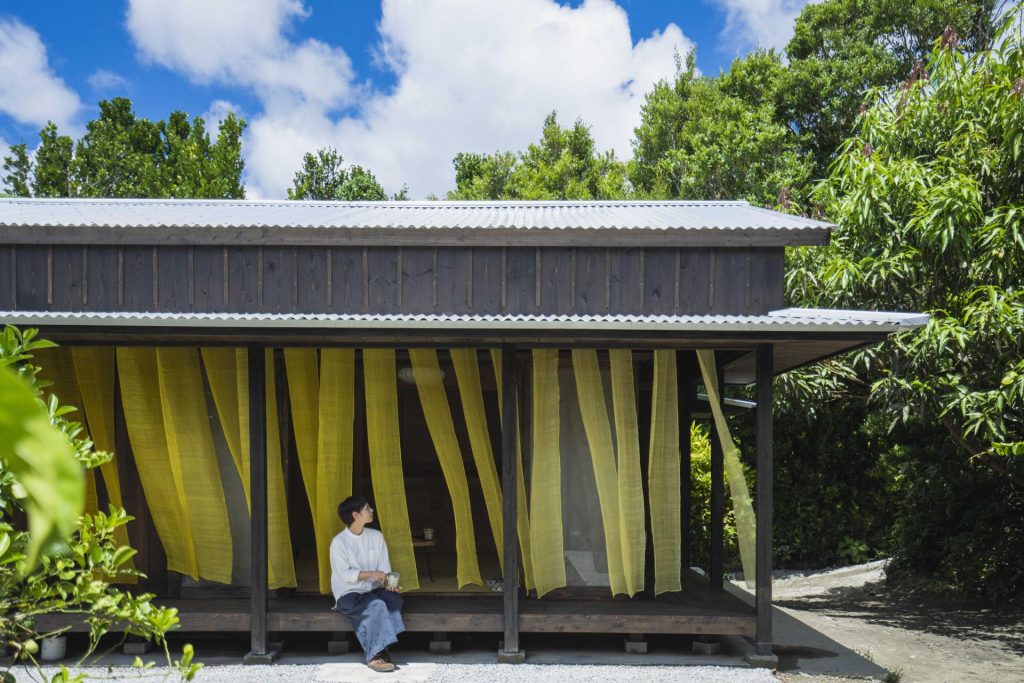
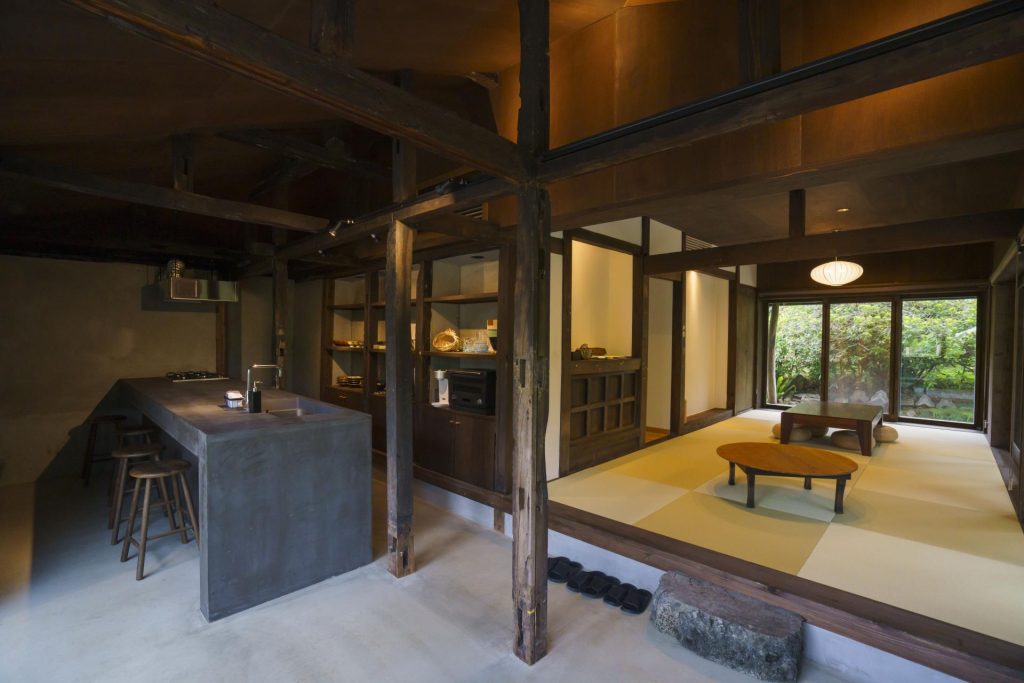
ESSENTIAL INFO
Getting There: The Yambaru Region is accessible by car from Naha, the capital of Okinawa. The drive takes about 1 hour 45 minutes depending on traffic conditions. Public transportation options are limited, so renting a car is recommended in order to explore the area. You can book both the villas and activities at Nanmei Shinsitsu at yambaru.co.jp
Yambaru Blue Zone Tours: It’s possible to join a three-day tour with a local guide and experience the Yamburu culture and lifestyle. Tours are limited to one group per week from June to September. More information is available at yambaru.co.jp/bluezone
WRITER BIO
Akiko Terai is the author of two narrative non-fiction books in Japanese, “10 Years Later” and “Letters from Savanna.” With a passion for storytelling and a commitment to preserving local heritage, she contributes to magazines and newspapers, bringing her expertise to regional initiatives through in-depth research and story-based travel content creation. Splitting her time between Tokyo and Okinawa, she also works as a bilingual guide, providing personalized tours that highlight the cultural and natural beauty of Japan.
